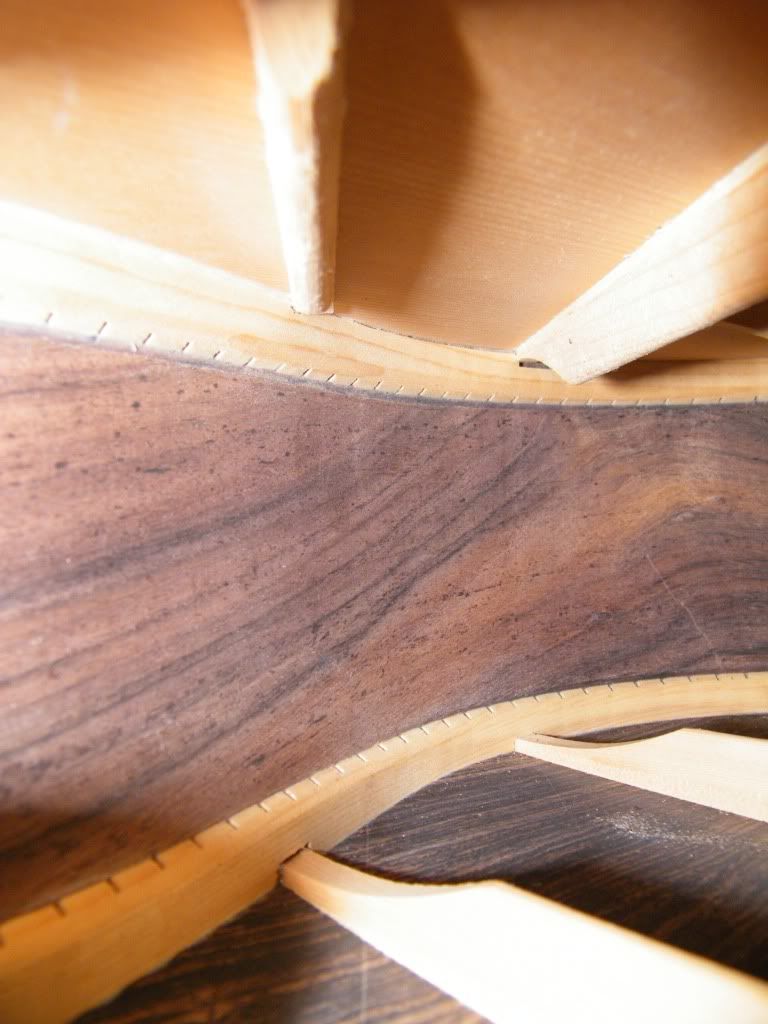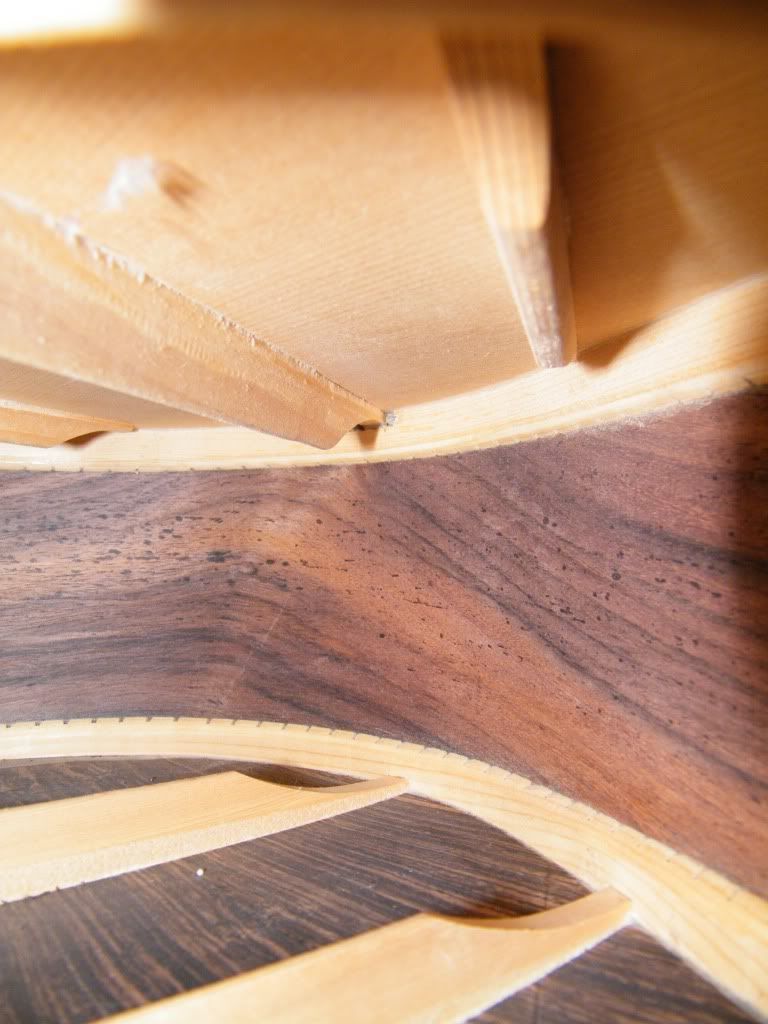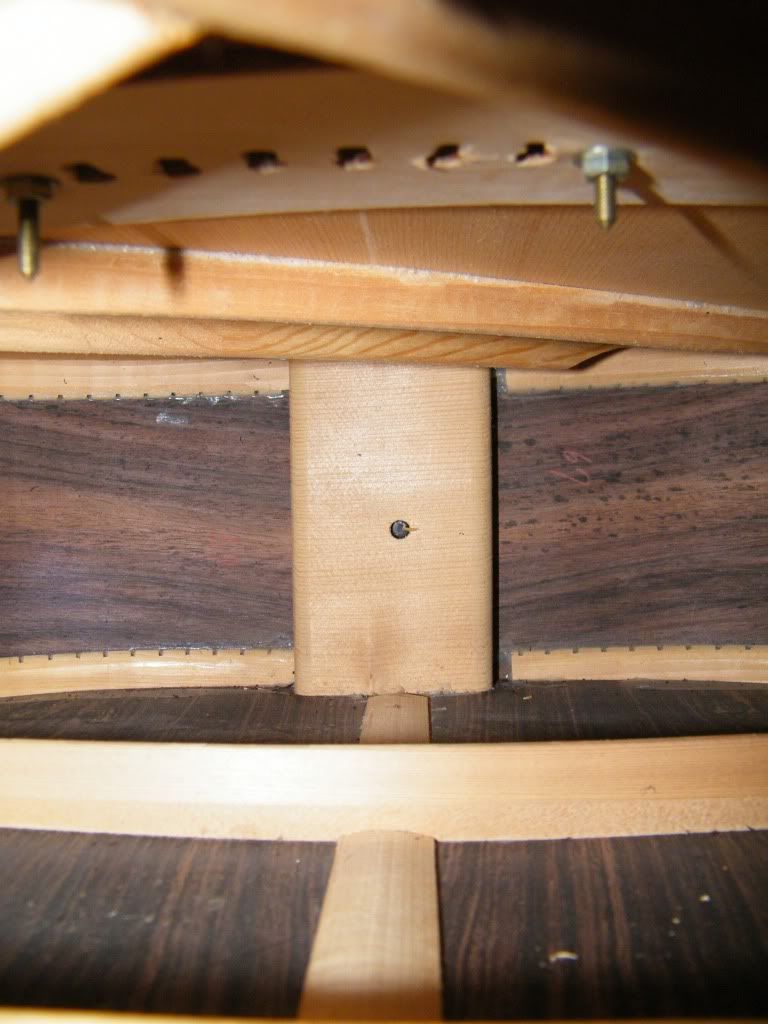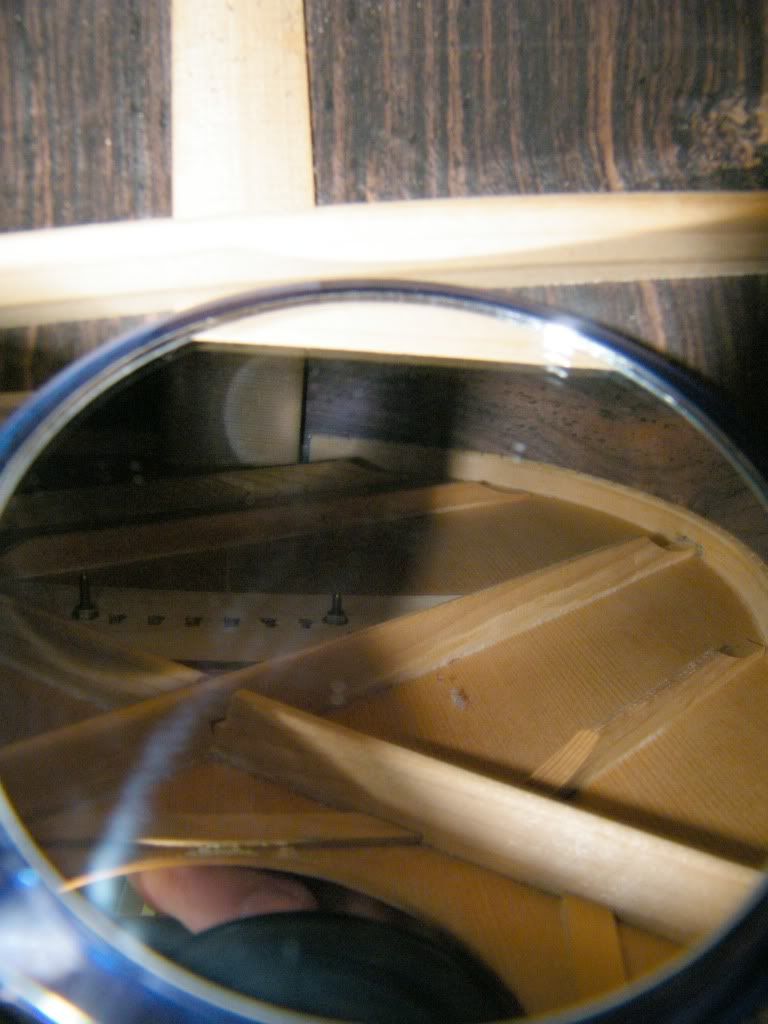Hello all!
I have a few questions about humidity I hope I can get some answers to.
I am familiar with the problems that can occur with to much/to little humidity. And use humidifiers, de-humidifiers accordingly.
My trouble is... I just acquired (finally) my Mothers mid to late 70's Sigma DR-7 acoustic guitar. I believe it has been subject to way to much humidity. It has developed a slight belly bulge, fret ends sunk into the fretboard, and what looks like warping of the sound hole, again minimal, and some fret buzzing.
I guess my first question is...
1 - Will those symptoms go away by simply letting it sit in my humidity controlled room?
2 - If so, about how long will that take? I'm assuming it took years to get to this state, will it take years to correct it?
3 - Should I subject it to a very dry room?
4 - Should I not play it at all?
5 - Keep it strung up? No strings?
Thank you for any help in what I should do!!
T
I have a few questions about humidity I hope I can get some answers to.
I am familiar with the problems that can occur with to much/to little humidity. And use humidifiers, de-humidifiers accordingly.
My trouble is... I just acquired (finally) my Mothers mid to late 70's Sigma DR-7 acoustic guitar. I believe it has been subject to way to much humidity. It has developed a slight belly bulge, fret ends sunk into the fretboard, and what looks like warping of the sound hole, again minimal, and some fret buzzing.
I guess my first question is...
1 - Will those symptoms go away by simply letting it sit in my humidity controlled room?
2 - If so, about how long will that take? I'm assuming it took years to get to this state, will it take years to correct it?
3 - Should I subject it to a very dry room?
4 - Should I not play it at all?
5 - Keep it strung up? No strings?
Thank you for any help in what I should do!!
T
Tags: Humidity
Views: 494
Replies to This Discussion
-
I would say no strings for a week or two in the area where you will use it. Then check for damaged brace and fix what needs to be fixed.
-
Thanks much for the reply and advice, I will try that. Are there any measurements or things I should look at now to check against in a week or so? You know... to know weather to leave it alone longer or not. (Does that make sense?)
-
Agreed, but I may have checked the braces while the guitar is still humid. Humid braces are soft. That makes it easy to force them back to where they belong.
-
I believe these Japanese Sigmas were laminate topped. If so, drying it our may not do much.
-
The bulging and sinking sound like braces to me but I don't have your guitar in front of me.
I have a DM-5 from the mid 70's that's plywood. I know that some Sigma's were built with solid tops and maybe even back and sides but I don't think many were. Mine was stable for years then suddenly developed a bulge in the top at the bridge, First check found that the bridge plate is loose on the ends and I suspect that the lower ends of the X brace has some separation too. The neck has no problems. I doubt if it will hurt anything to allow your's to set, unstrung for a while but, unless you are someplace with a climate like Jamaica, I have to wonder how it could get that saturated. Usually it drying that is the problem.
Ned
-
Thanks a lot for the help guys!
I finally got some time to look more closely at the guitar and I don't think it is as bad as I initially thought. Ned & Christian, I really don't think this is laminate/plywood, but I am new at this. :-) I took a few pics, some good some not so good. I couldn't see any evidence of brace separation. I'm going to let it sit with no strings for a week, string it up and adjust the truss rod.
One thing that concerns me are the bridge pin holes. They all have "cut" into the top about an 1/8 to 3/16. I really don't have the funds to get this fixed right now, or have the tools to try it myself. Wondering what to do about this?
A few more pictures here...
http://s174.photobucket.com/albums/w116/tbonegraphix/Sigma%20DR-7/
Thanks again guys!
T
-
Tim,
Judging from the pictures, I would say that that bridge plate needs to be repaired if you intend to string the guitar. Right now I think there are two issues. The wear from the string balls needs to be addressed and I suspect that the plate is loose at least on the ends.
First of all, I'm hardly an expert on Sigma's ( or anything else, for that matter) but I'm suspicious of the bolts through the bridge. My guitar isn't the same model but it doesn't have them AND one of the problems with mine is that the ends of the bridge plate are loose. I can't help but wonder if the bolts are a repair attempt. Bolts will keep the bridge down on the face but won't keep the face from pulling up. Use your fingers to press on the ends of the bridge plate next to the X brace and feel for a bit of spring. This would indicate that the plate isn't glued down properly. Take a feeler gage or something thin and stiff and see if it will slide under the plate from the back edge. (Don't ram it under and crack the plate, just see if it will slip under.) I suspect that a loose bridge plate is the cause of your bulging top.
Really, with the string hole completely worn through and what I suspect is happening with the attachment of the plate, I would probably remove the plate and replace it. I can't really give you good advice about doing it yourself because I use a couple of special tools and if you don't have those, you really risk damaging the top.
If the plate is loose on the ends, as I suspect, but not along the back edge, it might be possible for you to re-glue the plate then address the string holes separately.
Judging from the shot you took of the edge of sound hole, I am fairly sure this is a laminate guitar. Of course, I don't have it right in front of me but the pictures looks like there is vertical grain sandwiched between two horizontal skins. In other words, it looks just like the sound hole edge on mine. My guitar isn't worth a lot of money but it handled decades of mediocre care and until a couple of years ago, was always ready to go. They are pretty decent Japanese guitars.
Ned
-
Hello
I have a Sigma DR12-7.
I had the same problem. You can see the story here: http://fretsnet.ning.com/forum/topics/12-string-sigma-with-bellied
The two bolts are original, I used them to hold my Bridge Doctor.
Now, after few months, my guitar is flat as new and it was tuned to concert pitch all the time.
-
Yeah, Eugen, I may use a Bridge Doctor when I get around to fixing my Sigma but I will also glue the ends of the bridge plate back down. It could be that a B.D. will work well for Tim's guitar but I think the the bridge plate should be in good condition before it is installed. If his bridge plate is loose, like mine, I think it is possible that he will not need a B.D. once it is repaired.
Ned
-
Thank you for the that! That was quite the undertaking! I had never heard of that Bridge Doctor before, pretty cool stuff. Can't believe you made that "Y" brace thing... very impressive! Good to know the BD is there in case my "home remedy" doesn't work out.
I was thinking about tuning mine a 1/2 step down to relieve "some" of the tension... we'll see.
T
-
Thanks once again for your reply Ned! I really appreciate it.
As Eugen C said below... I'm pretty sure the two bolts are original as well. This guitar was owned by my mother and father in-law. I'm quite sure they never had anything done to the guitar (unfortunately), because I think it would be a better guitar had they taken better (any) care of it. Annnnyways......
I checked the bridge plate as you suggested and found no spring to it at all. I can slip a piece of inkjet paper under the bridge (only on the high string side) about 1/8 to 3/16, and only on the back side. Either side of the bridge seems to be glued down solid.
By keeping it my room, which I'm keeping a little lower humidity in for the time being (around 35%), and unstrung the bulge is decreasing all ready, in two days! (By the way it's killing me having this guitar finally and not being able to play it!! :-) I'm going to let sit this way until next weekend. I've adjusted the truss rod as well, and have been keeping an eye on it. I really think this was a lot of the problem. I learned through this web page a few things too http://www.bryankimsey.com/ I think for the time being I'm going to do what he did here http://www.bryankimsey.com/bridges/example.htm and use an overlay strip. And possibly "ramp" the bridge too if need be. Because I quite simply don't have the funds to get it done right at this time. I figure this way, If I can get playable, and hear how it sounds, and if it sounds like I remember back in the day. I can justify spending the money to get it fixed right.
I gotta' say I'm a little bummed it may be laminate. Because the grain looks very much the same on the inside as it does the outside. But no matter I guess if sounds good!
Thanks again,
I'll be back with a progress report!
T
-
Tim,
You never did say why you thought it was over saturated but be careful about drying it out too fast. You could end up with more problems. To me, 35% seems a bit low. I'd be more comfortable with 45% or 50% but I think it's most important that you don't allow it to dry out too fast.
I believe that the laminate is made up of a core of spruce with spruce skins on the outside so it IS spruce... just not SOLID spruce. That's why the convention today is to describe solid tops as "solid.." while laminated back and sides are usually just "mahogany" or whatever. Actually, I've played a lot of laminate guitars that were pretty decent instruments. Usually they don't have nearly the resale value that a solid guitar would have but they are usually more stable ( in my opinion).
Until the bridge plate started to fail on my Sigma, it has been a good guitar that suffered through camp-outs, and beach sing-a-longs with out a hitch. It's lasted through a couple of beginners and still played well and sounded fairly good in the process. It's not worth a lot but it did the job and will again when I fix it.
Ned
© 2025 Created by Frank Ford.
Powered by
![]()



